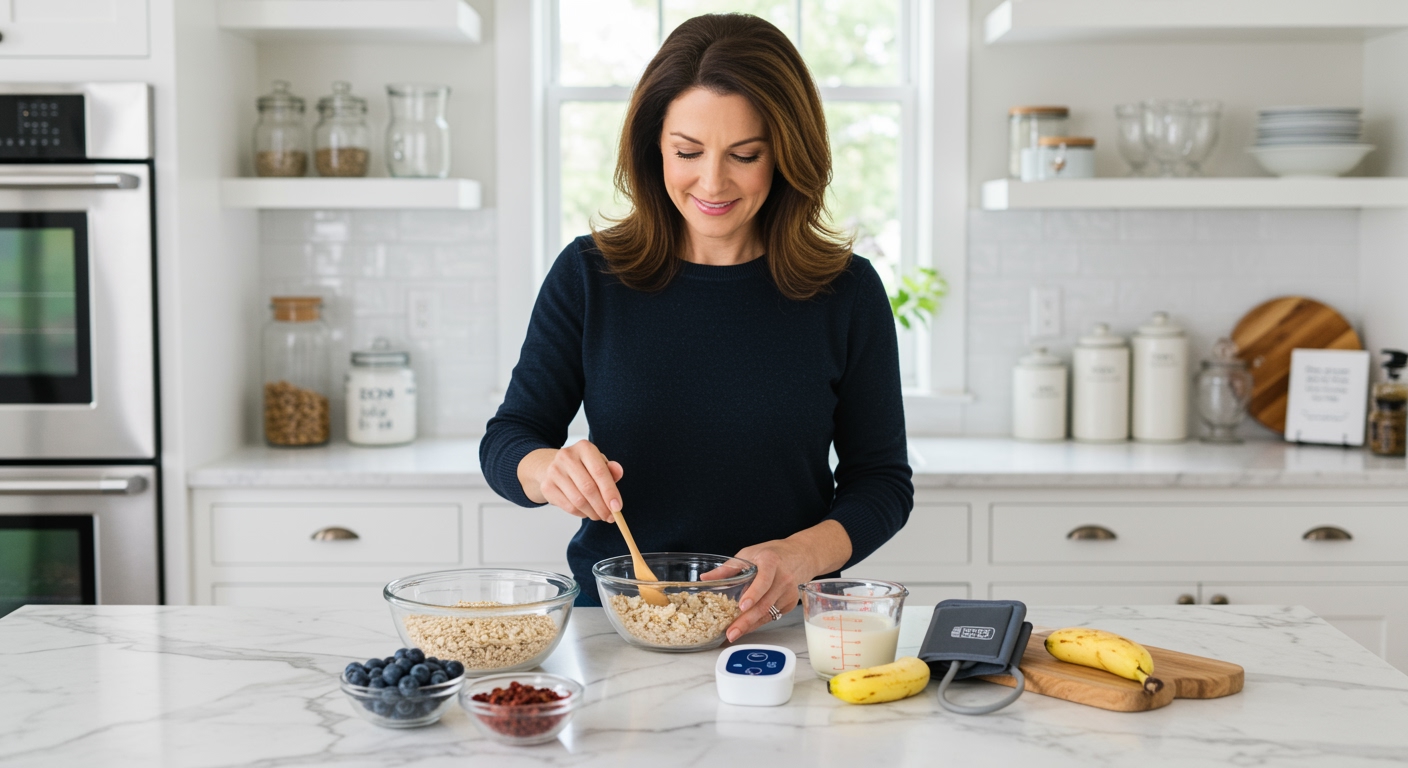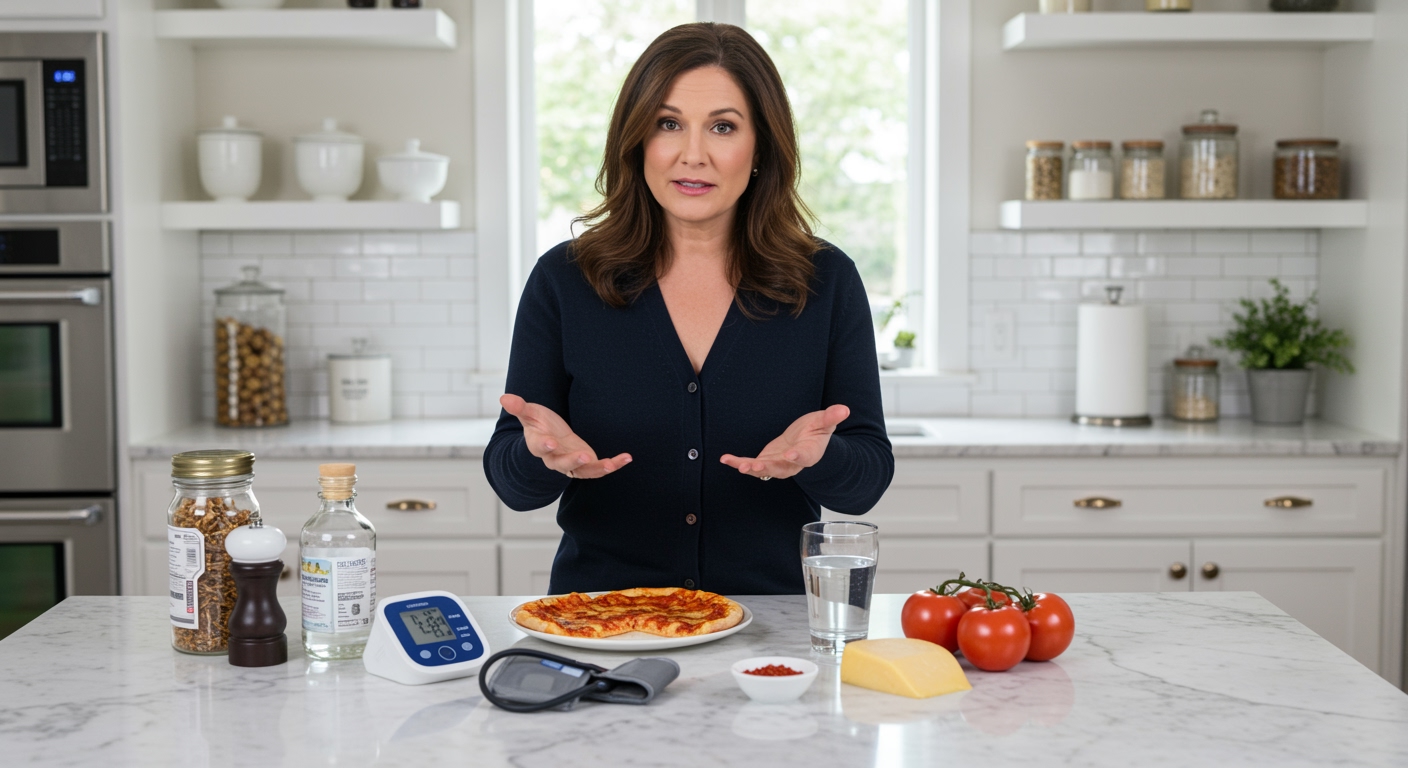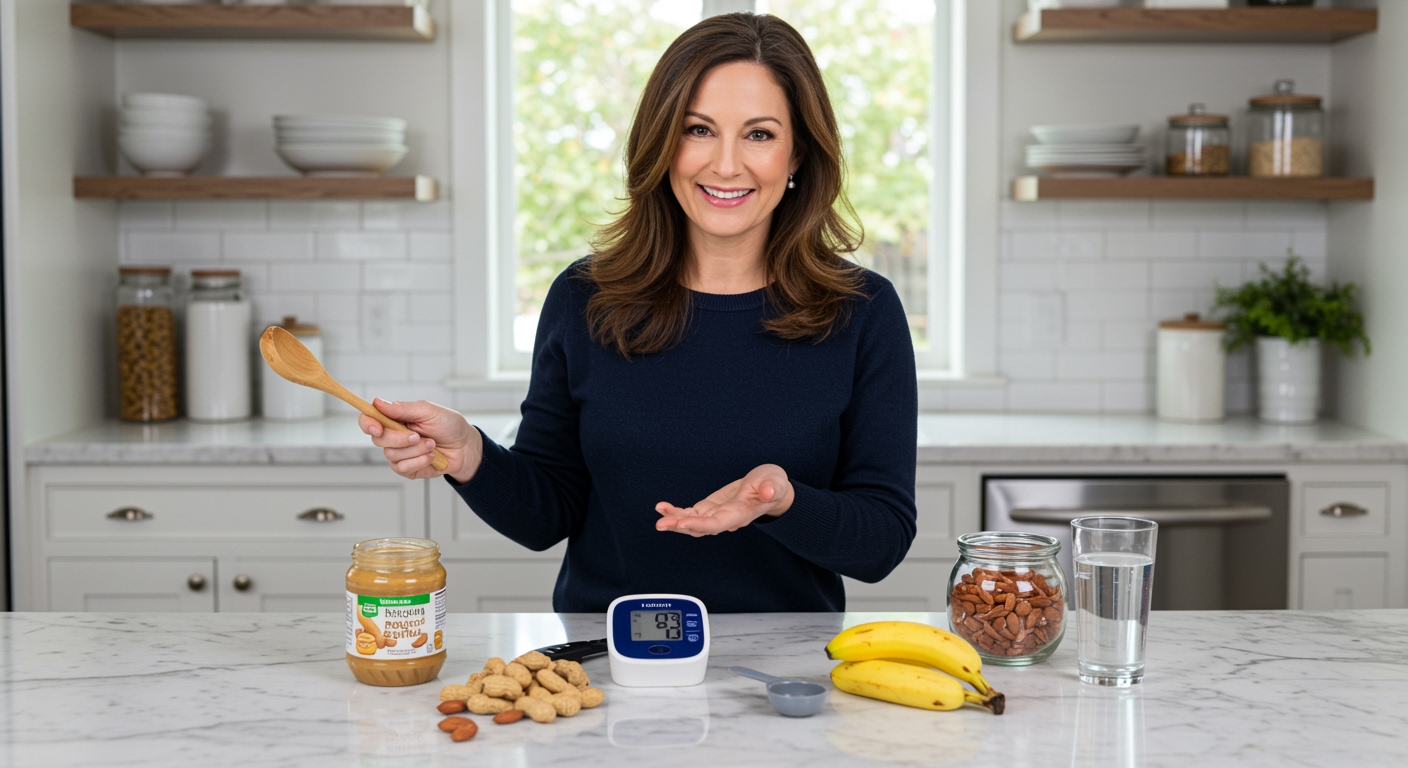✪ Key Takeaway: Oatmeal provides gentle blood pressure support through fiber and nutrients but cannot significantly raise dangerously low blood pressure.
Introduction
Your morning bowl of oatmeal sits there looking innocent, but you wonder if it might actually make your low blood pressure worse.
You might be asking this question because you have hypotension and worry that foods known for lowering blood pressure could drop your numbers even further.
Hi, I am Abdur, your nutrition coach and today I am going to explain exactly how oatmeal affects low blood pressure and whether you should include it in your daily routine.
What Happens When You Eat Oatmeal With Low Blood Pressure?
Oatmeal contains beta-glucan fiber that works differently than most people think when it comes to blood pressure regulation.
This soluble fiber helps stabilize blood sugar levels, which prevents the dramatic drops that can worsen hypotension symptoms.
When your blood sugar crashes, your blood pressure often follows, leaving you feeling dizzy and weak.
Oatmeal provides sustained energy release that keeps your cardiovascular system functioning more smoothly throughout the morning.
The complex carbohydrates in oats give your heart steady fuel without the rollercoaster effect of simple sugars.
✪ Pro Tip: Add a pinch of sea salt to your oatmeal to help maintain healthy sodium levels for blood pressure support.
Does Oatmeal Lower Blood Pressure Too Much?
Research shows that oatmeal has a modest effect on blood pressure reduction, typically lowering systolic pressure by 2-3 mmHg.
This small decrease rarely causes problems for people with mild hypotension, especially when blood pressure readings are above 90/60 mmHg.
The magnesium content in oats supports healthy blood vessel function, which can actually help prevent the extreme fluctuations common in hypotension.
Your body needs consistent nutrient support to maintain proper circulation, and oatmeal provides several key minerals for cardiovascular health.
The fiber in oatmeal also helps your body absorb nutrients more efficiently, supporting overall circulatory function.
Most people with low blood pressure can safely enjoy oatmeal without experiencing dangerous drops in their readings.
✪ Fact: Beta-glucan fiber from oats can reduce systolic blood pressure by an average of 2.7 mmHg according to clinical studies.
How Should You Prepare Oatmeal For Low Blood Pressure?
The way you prepare your oatmeal makes a significant difference in how it affects your blood pressure and energy levels.
Choose steel-cut oats or old-fashioned rolled oats instead of instant varieties that can cause blood sugar spikes and crashes.
Add protein sources like nuts, seeds, or Greek yogurt to slow digestion and provide sustained energy for your cardiovascular system.
Include a small amount of healthy fats from sources like almond butter or chopped walnuts to support nutrient absorption.
Consider adding potassium-rich fruits like bananas or berries, which help maintain proper electrolyte balance for healthy blood pressure.
Cook your oats with milk instead of water to increase the protein content and create a more satisfying meal that supports stable blood pressure.
✪ Note: Steel-cut oats take longer to digest, providing more stable blood sugar and energy levels throughout the morning.
When Should You Avoid Oatmeal With Hypotension?
Certain situations require extra caution when eating oatmeal if you have consistently low blood pressure readings.
Avoid plain oatmeal on an empty stomach if your blood pressure regularly drops below 90/60 mmHg, as this can worsen morning hypotension.
Skip oatmeal before exercise or physical activity when you already feel lightheaded or dizzy from low blood pressure.
Be cautious if you take medications that lower blood pressure, as the combined effect might cause your readings to drop too much.
Watch for symptoms like increased dizziness, fatigue, or fainting spells after eating oatmeal, which could indicate your blood pressure is dropping too low.
Consider timing your oatmeal consumption later in the day when your blood pressure naturally tends to be higher than in the early morning.
✪ Pro Tip: Monitor your blood pressure before and after eating oatmeal to understand how your body responds individually.
What Are Better Breakfast Options For Low Blood Pressure?
While oatmeal can be part of a healthy diet for hypotension, other breakfast choices might provide better blood pressure support.
Eggs with whole grain toast offer complete protein and B vitamins that support healthy circulation and energy production.
Greek yogurt with nuts and fruit provides protein, probiotics, and natural sugars that help maintain steady blood pressure throughout the morning.
Avocado toast with a sprinkle of sea salt delivers healthy fats and sodium that can help raise low blood pressure naturally.
Smoothies made with leafy greens, protein powder, and coconut water provide electrolytes and nutrients for cardiovascular support.
These alternatives often provide more immediate energy and blood pressure support than oatmeal alone, especially during morning hypotension episodes.
The Bottom Line
Oatmeal is generally safe for people with low blood pressure and may even provide gentle cardiovascular support through its fiber and nutrient content.
The key to managing hypotension lies not in avoiding healthy foods, but in understanding how your body responds to different nutrients and timing your meals accordingly.
I would love to hear about your experiences with oatmeal and low blood pressure, so please share your thoughts or questions in the comments below.
References
At NutritionCrown, we use quality and credible sources to ensure our content is accurate and trustworthy. Below are the sources referenced in creating this article:
- PubMed: Oats and Blood Pressure Research
- Harvard DASH: Oat Bioactives and Cardiovascular Health
- PMC: Beta-Glucan and Blood Pressure Effects
- Mayo Clinic: Healthy Oatmeal Benefits





